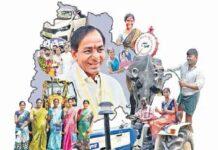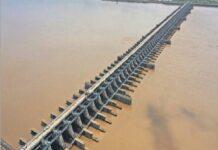The emergence and utilization of implantable cardioverter defibrillators and cardiac resynchronization therapy defibrillators that substantially reduce mortality in heart failure patients.
From advanced imaging tools for diagnosis to gold standard stents for treatment, India has witnessed significant improvements in heart care in the last three decades. Today, there are solutions available that can help save millions of lives. We have seen the emergence and utilization of implantable cardioverter defibrillators and cardiac resynchronization therapy defibrillators that substantially reduce mortality in heart failure patients.
Another remarkable and critical milestone in this arena has been that of stent deployment. We have stents that have met the benchmarks of efficacy, safety, and quality checks that are helping to address the cardiovascular disease (CVD) burden in the country. One in four deaths in India is attributed to CVDs and in 2016 alone, 54.6 million people were affected by heart ailments.
Over 80 percent of CVD deaths are due to coronary artery disease (CAD) and stroke. As per data from numerous epidemiological studies, the burden of CAD was three to five percent in rural and seven to ten percent in urban populations. Moreover, with an increase in incidences of diabetes, smoking, hypertension, sedentary lifestyle, an unhealthy diet, India is witnessing a surge in complexity in CAD cases.
At a time when the pandemic has underlined gaps in India’s healthcare, innovations in heart care are fighting the biggest challenges, helping people to live a better quality of life. In a country where the medical device market is estimated to reach a whopping USD 50 billion in the next four years, the value of technological innovations in heart care stands more pronounced than ever before. It would be pertinent to delve deeper into what these technologies mean to a country like ours, how they can address the heart disease burden, and how do we ensure that all patients have access to them.
How do we build a world where healthcare is accessible to all? A major contributing factor is to embrace new technologies. Coronary artery disease occurs when the arteries that supply blood to the heart become narrow leading to chest pain and shortness of breath. To open coronary artery blockages, minimally invasive techniques like Percutaneous Coronary Intervention (PCI) are used in which, a catheter is used to place a stent to open up blocked blood vessels in the heart that have been narrowed due to plaque build-up. This condition is known as atherosclerosis. PCI restores normal blood flow, decreasing heart-related chest pain and giving people better quality of life.
Cutting-edge technologies are helping to provide patients better care and encourage them to live a quality life. Techniques like PCI are used to open lesions or blockages in the coronary artery by less invasive methods. Drug-eluting coronary stents, bare-metal stents, improved visualisation, coronary guidewires, and catheters are now being used during PCI to treat coronary artery disease.
We now have drug-eluting stents that help doctors to treat challenging cases that involve complications such as diabetes, multiple or blocked arteries. They also make it easier for the doctor to access and unblock difficult-to-reach lesions.
These tools are helping people with coronary artery disease regain their health. And as advanced technologies aid in opening lesions, enhanced visualisation techniques are adding precision to the treatment process. For decades, PCI has been guided solely by angiography which offers a two-dimensional view of a three-dimensional structure. Angiography does not provide information about plaque, and cannot quantitate the severity and location of calcium.
New visualization techniques such as Optical Coherence Tomography (OCT) are redefining cardiac care and changing the nature of how patients are treated by providing the highest resolution images. OCT provides accurate and automated measurements that guide the doctor in stent selection, placement, and deployment.
Even when medical devices are available, the biggest challenge for a cardiologist is to determine in which cases to use these. Every patient has different needs and there is no one size fits all approach when it comes to cardiac care. A person with a kidney problem may require a different stent than the one who has diabetes.
In certain cases, based on angiographic results alone, patients undergo stenting which could have been avoided. We have technologies like Fractional Flow Reserve (FFR), that measure blood pressure accurately through a specific part of the coronary artery and help in decision making. Based on an FFR result, the doctor can decipher if stenting is needed or not, and for cases where it is required, it aids the doctor in choosing the most suitable stent for the patient.
With the advancement in medical science, today, we have technological breakthroughs that are providing people an option of managing their cardiac health better.
However, staying abreast of the latest treatment options and being vigilant about signs of cardiac ailments are pivotal to living a healthy life. Moreover, for a country like India that has been reeling under the burden of cardiovascular diseases for decades, medical technologies such as stents give hope to patients with coronary artery disease.
As complexity in the field of cardiology is increasing, patients need the latest treatment options. Therefore, India needs to embrace innovations, spread awareness, and ensure that quality treatment reaches all citizens. #livehyd #LiveHyd







